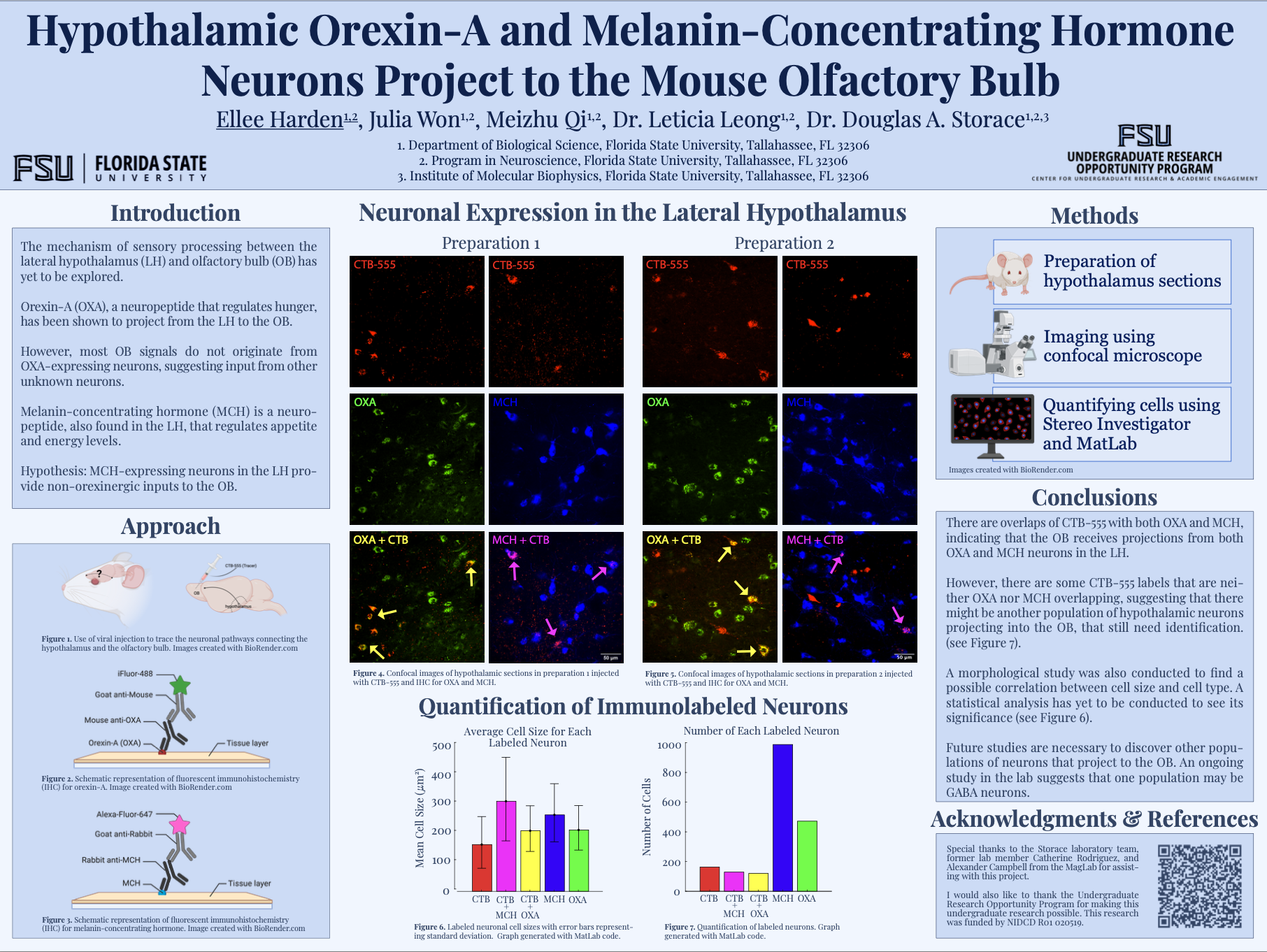Research Symposium
25th annual Undergraduate Research Symposium, April 1, 2025
Ellee Harden Poster Session 3: 1:45 pm - 2:45 pm/ Poster #83
BIO
Ellee Harden is a second-year dual degree student at Florida State University, studying to obtain a B.S. in Cell & Molecular Neuroscience, a B.S. in Exercise Physiology, and minors in Chemistry and Biology. She is from Tampa, Florida, and is involved in UROP, VOLT, Delta Zeta, and the LA program at FSU. She assists in the Storace Laboratory, and her research interests surround neurophysiology and the molecular basis behind olfactory sensory processing. Ellee plans on hopefully attending medical school after graduating from FSU and becoming a physician who actively participates in research. She is also considering doing an MD/PhD program to help with her research endeavors. Oncology, neurology, and endocrinology are the specialties she is most interested in pursuing. Ellee has always had a strong thirst for knowledge and is eager to contribute to the ever-evolving healthcare community.
Hypothalamic Orexin-A and Melanin-Concentrating Hormone Neurons Project to the Mouse Olfactory Bulb
Authors: Ellee Harden, Dr. Leticia LeongStudent Major: Cell & Molecular Neuroscience and Exercise Physiology
Mentor: Dr. Leticia Leong
Mentor's Department: Department of Biological Sciences, Program in Neuroscience Mentor's College: College of Arts and Sciences Co-Presenters:
Abstract
Mice rely on their keen olfaction system to interpret and adapt to environmental changes, making
them an invaluable model for studying sensory processing and neurobiological processes. Our
laboratory identified a candidate pathway for this process from hypothalamic neurons that
express the neuropeptide orexin-A (OXA) and a distinct population that did not. Our preliminary
studies showed that the neuropeptide melanin-concentrating hormone (MCH) is expressed
densely throughout the bulb. Because MCH is primarily expressed in hypothalamic neurons near
those that express orexin, we hypothesized that non-orexin inputs originate from MCH-
expressing neurons. To investigate, we injected Cholera Toxin subunit B conjugated to Alexa
Fluor 555 (CTB-555) into the olfactory bulb (OB) to trace projecting neurons. Using
fluorescence immunohistochemistry with antibodies for OXA and MCH on hypothalamic
sections, we confirmed that MCH neurons overlap with CTB, demonstrating that the OB
receives projections from MCH-expressing neurons. Confocal microscopy identified cell
position and type (CTB, OXA, MCH, CTB-OXA, CTB-MCH). Our preliminary analyses
suggest that the mouse OB receives inputs from at least three distinct neuron populations: ~40%
that express OXA (~20 %) and MCH (~20 %), and the remainder that do not. Our research
outlines hypothalamic communication with the olfactory bulb, linking sensory perception and
physiological state. Exploring OXA and MCH’s role in this connection may uncover how smell
influences arousal and feeding behaviors. Our research may improve understanding disorders
like insomnia or anosmia (loss of smell). This is especially important post-COVID-19, as many
experience chronic sensory deficits like anosmia and ageusia (loss of taste).
Keywords: hypothalamus, olfaction, sensory processing, neuroscience


